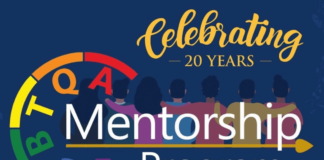
Q&A with Dr Friederike Otto, who has been added to the 2021 TIME100, an annual list of the 100 most influential people in the world.
The TIME100 list recognises the impact and achievement of the world’s most influential individuals, according to the renowned TIME magazine.
On 1 October 2021, Dr Friederike (Fredi) Otto, who appears on the list for the first time, will join Imperial College London as one of the latest recruits to the Grantham Institute – Climate Change and the Environment. The Grantham Institute is one of Imperial’s six hubs for research, innovation and influence on global challenges.
Fredi is a physicist with a doctorate from the Free University Berlin in philosophy of science in 2011. She joined the University of Oxford in the same year and is currently associate director of the Environmental Change Institute, University of Oxford.
Her main research interest is on extreme weather events such as droughts, heat waves and storms, and understanding whether and to what extent these are made more likely or intense due to climate change – known by experts as ‘climate change attribution’.
In 2018, Fredi became one of the international climate scientists writing the Intergovernmental Panel on Climate Change (IPCC) Sixth Assessment Report (AR6) The Scientific Basis, which was published in August, she is also an author on the IPCC’s new Synthesis Report which will be published in September 2022. This summarises all the science reported by the IPCC since 2018.
Fredi was named one of New Scientist’s ‘Ones to Watch’ in 2019 and the following year climate change attribution was named one of MIT Tech Review’s top ten breakthrough technologies.
The full list and related tributes appear at time.com/time100.
What four words describe Fredi? (we allowed Fredi to cheat with hyphens!)
Physicist, wannabe-dancer, media-go-to-scientist, theatreland.
Tell us about your greatest achievement?
Developing World Weather Attribution (WWA) has been an international effort to quickly analyse and communicate whether and how much climate change has contributed to a given extreme weather event. Timely evidence that is trusted by scientists and policymakers has helped to change the global conversation around climate change, influencing how governments plan to adapt to the coming environmental changes and paving the way for legal action against fossil fuel companies.
In my personal life, having an 11-year-old son who is confident and well-rounded. I’m not sure how much I actually did to make that happen, but he seems to be very happy, pretty much wherever he is, and I think it’s a great achievement.
What led to you joining Imperial College London at this time?
The Grantham Institute puts a big emphasis on people and structures to support the communication, outreach, engagement of science with the wider world. To me this is as important as doing the science, so it seemed a good fit for my philosophy. I’m also looking forward to working with the really good scientists at Imperial and expanding my network of UK researchers. Also, the Grantham Institute was missing someone who knows about my topic, so I’m a good fit for Imperial too.
You have a rainbow in your Twitter bio, what does that mean to you?
I am bisexual, and my housemate is gay so we’re proud to be part of the queer LGBT+ community. Many people who are allies to LGBT+ people also put rainbows in their online profiles to show they support our rights. Equality for everyone is about making the whole of society better and this is something I feel very strongly about.
Do you have any pets?
Skyler is my Labrador-collie cross. She was a happy accident that happened to a friend’s dog and nobody else wanted the girl! It’s been good to have a pet during lockdown, forcing me out for walks and keeping me sane.
I understand you have an interest in dance, tell us about that?
For a few years I’ve been dancing with a company called Justice in Motion. The pieces are contemporary dance and physical theatre that raises awareness of social issues, such as modern slavery and human trafficking, sometimes also in collaboration with experts at University of Oxford. I think art is a really important way to reach people in different ways than you would do with science communications.
What gives you hope?
It gives me hope listening to what the younger generations are doing and saying and wanting. I think they show that change is on its way for the climate and social liberation.
What do you do to unwind?
I love to read silly queer romance novels. Right now, I’ve just started one by Alexis Hall called Prosperity, it’s sort of a sci-fi historical story with queer characters. I love the author because the dialogues are just fantastic.
What is the single most important thing ordinary people can do to benefit the environment right now?
Make yourself aware of who you can influence to do more about climate change and the environment. If you’re at school that could be the teachers or governors, if you’re the Chief Executive of a company then use your influence on others in your network. We all have decisions we make and people whose minds we can change on how important this is.
Do you have a message for the people preparing for COP26?
I don’t think there’s enough understanding about how much we’re already paying because of climate change – particularly in conversations about the so-called ‘costs’ of cutting carbon emissions – and making changes that will lead to a net-zero economy.
One paper estimated that a third of the rainfall during Hurricane Harvey in 2017 was attributable to human influence on the climate, meaning the cost of everything that was destroyed is estimated to be $30-67bn out of a total of $90bn. Extreme weather events like this are only going to become more frequent and more extreme – just look at the floods, wildfires and droughts that have continued this year.







